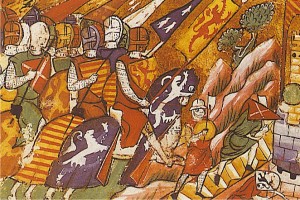 Who Went on the Crusades to the Holy Land?
Who Went on the Crusades to the Holy Land?
Tyerman, Christopher
The Horns of Hattin, ed. B. Z. Kedar (Jerusalem, 1992)
However the crusades to the Holy Land are regarded, the question of who undertook the journey to Jerusalem is of central importance. Was such crusading a truly popular movement, embracing all classes and groups of whatever degree or status? If so, why did it fail to produce sufficient recruits for whom settlement in the east was attractive? To what extent were crusades organized, controlled and recruited in ways identical to other contemporary armies? Any conclusions are likely to be tentative, especially as the active crusader can be studied as a fund-raiser, an employee, a member of his surrounding social hierarchy as well as a pilgrim and a soldier.
Crusading was not a spontaneous act. Preparations could be as hasty as Peter the Hermit’s or as protracted as Frederick II’s or Louis IX’s, but they were invariably characterized by raising money, collecting supplies, and gathering followers. The individual vow, a response either to public appeal or personal crisis, may have been a private decision; its implementation could not be. The departure of any crusader came at the end of a process whereby the crucesignatus obtained communal approval and, frequently, assistance for his pilgrimage. The consent of the parish priest, landlord, and family; the material help of those lay or clerical neighbors through whom the crusader converted assets into cash or pack animals; the religious ceremonies attendant on taking the cross; and, in many cases, the pious bequests and contracts with local monasteries were the familiar prerequisites of the journey to Jerusalem. For prudential reasons crusaders did not travel alone; neither did crusading armies assemble at random or by accident. Whether we are looking at general passagia or the innumerable crusade-pilgrimages, conducted by individual great lords or small groups, it is clear that all expeditions to the east were planned and structured.
Click here to read/download this article
